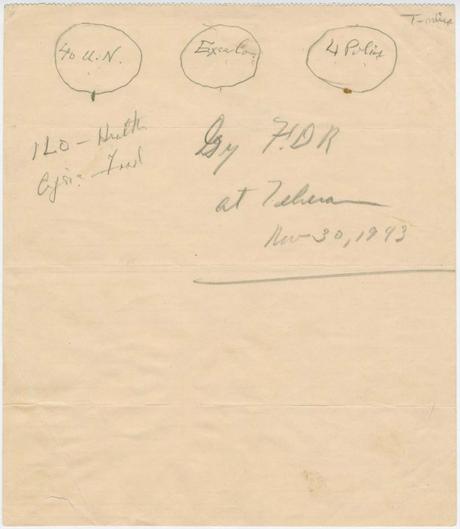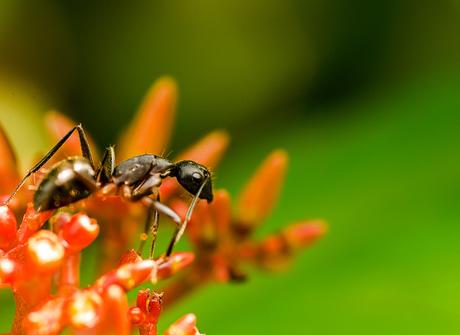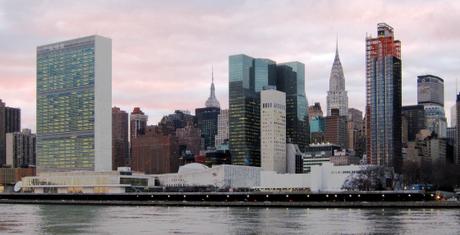“There is a way, if we allow ourselves to be guided by nature’s optimism and nature’s wisdom.”
Jay Harman, The Shark’s Paintbrush, p. 289.
In this blogpost, we will explore ways that nature can provide inspiration for The Global Challenges Prize 2017: A New Shape. We will focus the attention on swarm intelligence.
Bees use real-time negotiation to make decisions. Humans often have a less accurate approach to making predictions and to decision making. We use polls and votes, we polarise things.”Instead of finding common ground, they force us to entrench in predictions and make it harder for us to find the best answer for the group.” Louis Rosenberg
Organisations like the UN are getting bigger and this is problematic. Since the formation of the UN in 1945, the UN system, or the UN families, have added issues that they are dealing with, for example, sustainability and climate change.
You can see an interesting sketch below from 1943 by Franklin Roosevelt of the UN original three branches: The Four Policemen, an executive branch, and an international assembly of forty UN member states.

Photo By Franklin D. Roosevelt – Franklin D. Roosevelt Library & Museum, Public Domain, https://commons.wikimedia.org/w/index.php?curid=40093370
“Organizations can’t keep growing the way we structure them today.”
Tamsin Wolley-Barker compares organisations to dinosaurs. Dinosaurs needed huge bones to support their weight and the more weight, the more bones, and the more weight. In the end, the dinosaurs were too big.
“In regards to relative bone strength, the larger animals are at a much greater risk of breaking their bones than the smaller animals. The likelihood that a broken bone will cut an animal’s life short is a strong possibility for the larger animals. This possibility of broken bones affecting the animal’s survival thus becomes a limitation on the size of the largest animals.” From “The problem with big dinosaurs.“
Management is like a skeleton that supports an organisation so that it does not collapse. But when an organisation grows the cost of management is escalating, which could be problematic.
Also, a more worrying trend when an organisation grows is that the ability to change quickly declines.
Nature uses hierarchies all the time as a way to prevent things from changing. Animal societies have dominance hierarchy. However, research suggests that cooperation is impeded among chimpanzees as compared to cottontop tamarins. Chimpanzees live in steep and linear hierarchies in contrast to the more relaxed form of hierarchies that cottontop tamarins use.
Hierarchies may be important and there are ways to build a better hierarchy but if you want to build an organisation that can easily adapt to change, it is not an optimal structure. Hierarchies limits growth. Thus, to re-envision global governance for the challenges that face us in the 21st century, we need to develop new models.
Can animals provide any inspiration for new models of global cooperation?

Photo Subith Premdas
Teams of ants, termites or bees are often used as inspiration to explore how organisations work. Ants termites and bees are organisms with colonies consisting of sometimes millions of individuals. Yet together these work as a single organism. The labor is divided and one individual is helpless and cannot survive for long. By working together these organisms create abundance in harsh environments. They find a way of using things that often are overlooked by other creatures.
These animals use an open-ended structure that is dynamic and which allows them to quickly respond to changes in the environment. Yet, they lack a commander. They survive, or at least appears to, without making any forecasts and budgets. Instead, there is a smooth adaption to change, where all the individual creatures are contributing. The interactions between ants, termites and bees might be simple, nevertheless, together they can solve difficult problems.
Social insects have the following characteristics:
- flexibility
- robustness
- self-organization
Social organisms can quickly adapt to change and even when one or more individuals in the group fail to achieve the task, the group can still perform the task. Finally, the activities performed by the group are neither centrally controlled nor or they locally supervised.
Using this approach to decision-making as inspiration to design global cooperation may indeed be a challenge.
A challenge, fun and above all perhaps a necessary approach. We all know deep in our hearts that we face many problems. The future viability of our race is in danger. Nature constantly reinvents itself. We need to reinvent global cooperation with a similar irresistible optimism.

Photo By Neptuul – Own work, CC BY-SA 3.0, https://commons.wikimedia.org/w/index.php?curid=31552107
Save
Advertisements